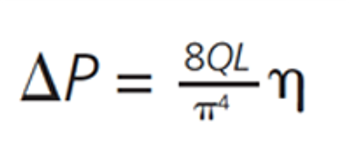
The Column
A snapshot of key trends and developments in the chromatography sector according to selected panellists from companies who exhibited at Analytica 2018.

The Column
A snapshot of key trends and developments in the chromatography sector according to selected panellists from companies who exhibited at Analytica 2018.

The Column
Agilent Technologies Inc. and Imperial College London have signed a strategic scientific collaboration agreement that will see a broad range of Agilent instruments installed in a sponsored measurement suite to be housed within Imperial’s Molecular Sciences Research Hub.

The Column
Researchers from the University of Minnesota have investigated the salivary proteomics of healthy dogs using offline high pH reversed-phase LC fractionation and nano LC–MS/MS.

The Column
Researchers from the University of Gothenburg, in Gothenburg, Sweden, have investigated whether plasma amino acid levels differed among children with celiac disease using liquid chromatography–mass spectrometry (LC–MS) (1).

The Column
Incognito focuses on a big challenge in regulated analytical chemistry laboratories.

The Column
The Column spoke to Arcadius V. Krivoshein, Assistant Professor of Chemistry at the University of Houston–Clear Lake, USA, about his work developing EPP, an experimental anticonvulsant that can help to stop convulsions during epileptic seizures, and the role of chiral HPLC in this research.

The Column
Gel permeation chromatography/size-exclusion chromatography (GPC/SEC) is a relative method and that requires a calibration to obtain molar mass distribution information. The way that the type of calibrants and the quality of the calibration curve influences the results is discussed in this instalment of Tips & Tricks.

The Column
The chemical composition of a copolymer material has a substantial impact on its properties and performance. Defining a composition profile is therefore an essential aspect of product development for these materials. The copolymer’s composition often varies considerably with molecular weight (MW), and in the R&D process, therefore, it requires a detailed analysis which maps out composition across the entire MW distribution.

The Column
This article introduces the development of an automated and versatile technique for solution viscosity determination of a wide range of polymeric materials in different solvents. Sample preparation is a tedious and error-prone process in viscosity determinations of polymeric materials, especially when elevated temperature or when hazardous solvents are required. This new approach automates sample preparation and injection to the viscometer detector, with benefits in efficiency and safety as well as in analysis precision. The dissolution conditions were studied and optimized to reduce thermal and oxidative degradation, which are detrimental to the accuracy of the observed viscosity.

The Column
Click the title above to open The Column April 2018 Europe & Asia issue, Volume 14, Number 4, in an interactive PDF format.

The Column
Click the title above to open The Column April 2018 North American issue, Volume 14, Number 4, in an interactive PDF format.